![A transport of Jewish prisoners marches through the snow from the Bauschovitz train station to Theresienstadt. [LCID: 69720]](https://encyclopedia.ushmm.org/images/large/781755a6-1ba5-4d8e-8b2b-9f25bdf3687f.jpg)
Browse an alphabetical list of photographs. These historical images portray people, places, and events before, during, and after World War II and the Holocaust.
<< Previous | Displaying results 1-18 of 18 for "Photo" | Next >>
Yaffa Sonenson (now Eliach) feeds chickens in front of her family’s summer home in Tetlance on June 23, 1941. Behind the camera is her grandmother Alte Katz, who owned a photo studio in Eyshishok. Yaffa survived the Holocaust in hiding, but her grandmother was murdered.Years later, Yaffa set out to recapture memories of life in Eyshishok before the Holocaust. Over 15 years, she traveled around the world in search of photographs of the community. More than 1,000 of the images she collected are now…
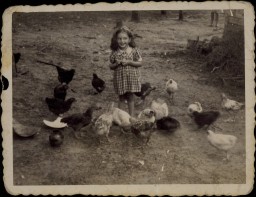
Soviet photographer Yevgeny Khaldei stands on top of the Brandenburg Gate in Berlin where he, along with a few Soviet soldiers, raised the Soviet flag. Berlin, Germany, May 1945.
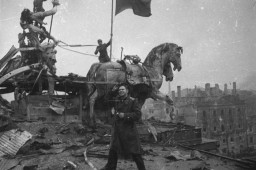
Soviet photographer Yevgeny Khaldei views the destruction of Budapest from a rooftop. Budapest, Hungary, February 1945.
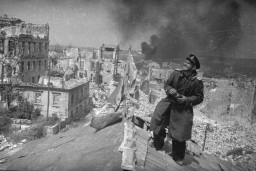
Photograph of Yisrael and Zelig Jacob, the younger brothers of Lili Jacob, from the Auschwitz Album.
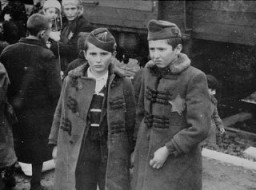
Yitzhak (Antek) Zuckerman, Zionist youth leader and a founder of the Jewish Fighting Organization (ZOB). He fought in the Warsaw ghetto uprising. Place and date uncertain.

Yitzhak Gitterman (left), Joint Distribution Committee (JDC) director in Warsaw, meets with the representative of an Orthodox Jewish organization. Warsaw, Poland, date uncertain.
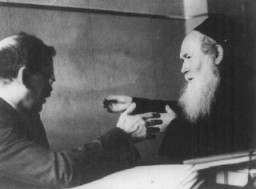
Yitzhak Rochzyn (other spellings: Isaac Roszczyn and Icchak Rochczyn) youth group leader and leader of the Lachwa ghetto underground.
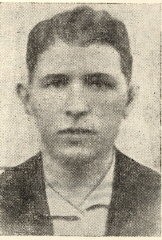
The "You Are My Witnesses" wall in the Hall of Witness at the United States Holocaust Memorial Museum. Washington, DC, January 2003.
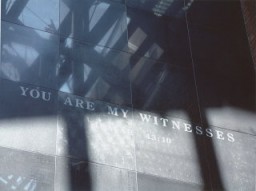
Elementary school-age members of Hashomer Hatzair in the Stuttgart displaced persons camp, circa 1946–1949. Lova Warszawczyk is standing in the center.
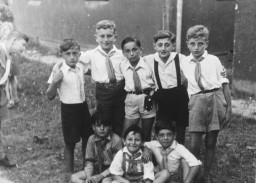
A group of young girls poses in a yard in the town of Ejszyszki (Eishyshok). The Jews of this shtetl were murdered by the Einsatzgruppen on September 21, 1941. Photo taken before September 1941.
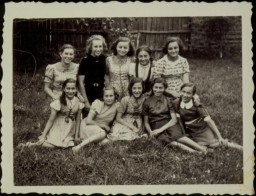
A brother and sisters, members of a Jewish family. One of the sisters pictured here, along with other family members, did not survive the Holocaust. Nove Zamky, Czechoslovakia, May 1944.
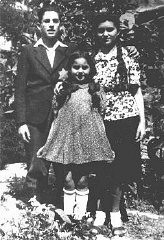
This photograph taken soon after liberation shows young camp survivors from Buchenwald's "Children's Block 66"—a special barracks for children. Germany, after April 11, 1945.
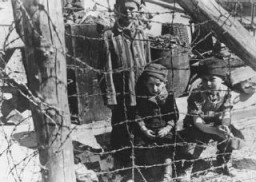
Young survivors of the Buchenwald concentration camp soon after liberation. Germany, April-June 1945.
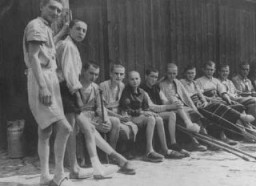
Children in the Bad Reichenhall displaced persons camp. Germany, 1945.
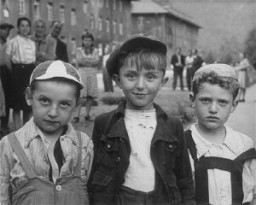
The Kloster Indersdorft displaced persons camp opened in July 1945. By mid-September, 1945, 192 boys and girls from thirteen nations, including 49 Jewish children, were sheltered at Kloster Indersdorf, more than double what had been anticipated. Over the next year, the numbers increased to over 300.Five hours each day were allocated to education. Teachers were drawn from the staff as well as the local community. Many of the children had few or no literacy skills; they also benefitted from art, music,…
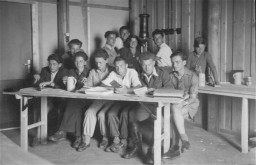
Youths with camp numbers tattooed on their arms aboard Aliyah Bet ("illegal" immigration) ship Mataroa, at the Haifa port. They were denied entry and were deported to Cyprus detention camps. Palestine, July 15, 1945.
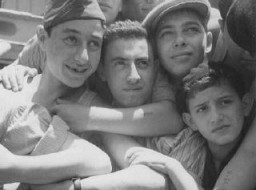
Mr. Mandil and his son Gavra, Yugoslav Jews, while in hiding. The Mandil family escaped to Albania in 1942. After the German occupation in 1943, Mandil's Albanian apprentice hid the family, all of whom survived. Albania, between 1942 and 1945.
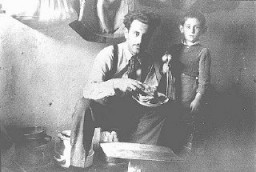
Yugoslav partisan leaders Josip Broz Tito (left) and Mosa Pijade (right). Pijade was a Jewish partisan with the Communist resistance. Yugoslavia, between 1941 and 1944.

We would like to thank Crown Family Philanthropies, Abe and Ida Cooper Foundation, the Claims Conference, EVZ, and BMF for supporting the ongoing work to create content and resources for the Holocaust Encyclopedia. View the list of donor acknowledgement.